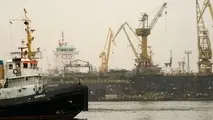2021 to be even better year for container shipping than 2020, says BIMCO
Global container shipping volumes fell by 1.2% in 2020 compared with 2019, much less than feared even before the pandemic was first declared, and much recovered compared with the 6.8% drop recorded in the first six months of the year, according to BIMCO.

Global container shipping volumes fell by 1.2% in 2020 compared with 2019, much less than feared even before the pandemic was first declared, and much recovered compared with the 6.8% drop recorded in the first six months of the year, according to BIMCO.
"BIMCO expects that 2021 will be even better for container shipping than 2020, as the current backlog will take months to clear and carriers are using the current strength of the market to lock in long-term contract rates for the coming 12 months at higher levels than in 2020,"
…notes BIMCO’s Chief Shipping Analyst, Peter Sand.
More specifically, volumes in H1 2020 were up 4.2% from 2019, a growth mostly concentrated on just a few trade lanes, with congestion and imbalances on these spilling out and causing disruption on other trades.
By far the largest volume growth was seen on the Far East to North America trade. On this route, volumes rose by 3.6m TEU in the second half of the year compared with the first, while volumes rose 2.1m TEU compared with the second half of 2019, enough to bring full year growth into positive (+1.4m TEU).
The second half growth caused major disruptions in many US West Coast ports, as they were unable to keep up with record high volumes while implementing social distancing among workers at the same time, due to the pandemic.
Furthermore, lower manufacturing and containerised exports in H1 2020 meant that the imbalance on the trade got even worse, leading to equipment shortages as containers were stuck in the wrong places.
There were only very few trades which bucked the trend and grew in the first half of the year. One of them was the Indian subcontinent and Middle East exports to the Far East; the thirteenth largest trade, which saw volumes increase by 115,000, TEU in H1 2020 compared to the same period in 2019.
"The particularly strong recovery in demand for containerised goods in the US was driven by a rise in consumer spending, particularly on goods for the homes that people have been spending much more time in, as well as higher spending on goods as consumers were unable to spend what they usually do on services,"
…explains Peter Sand.
As carriers release their full year results, BIMCO expects more good news to be on the horizon, in particular with the long-term contracts for this year, which have either been fixed in recent months or are still being negotiated. For all but the largest shippers, for whom carriers have in many cases rolled over last year’s rates in recognition that these shippers are too big to lose, long term rates will increase compared to last year.
"The current tightness in supply means that carriers have the upper hand when negotiating these new contracts, and although many shippers have initially been reluctant to sign new contracts, they will inevitably do so in the coming months. This will be done at high rates to the benefit of carriers, even if the spot market falls from its current highs."
The same goes for tonnage providers who are securing their ships on 6-to-12-month charters at today’s high charter rates.
"As to the current disruption and equipment shortages, BIMCO believes this will take at least until the middle of the year to be resolved, as a large backlog still needs clearing and equipment needs re-positioning."



